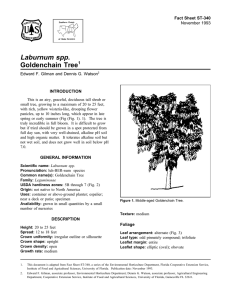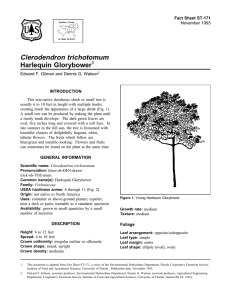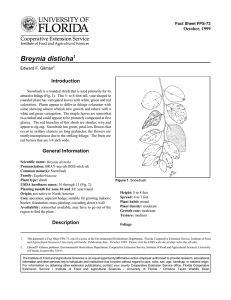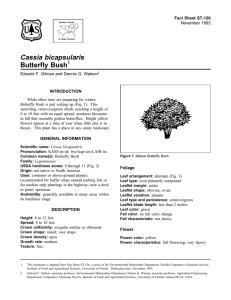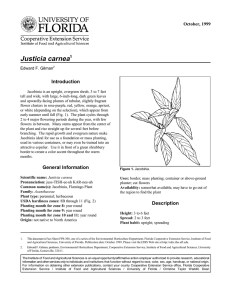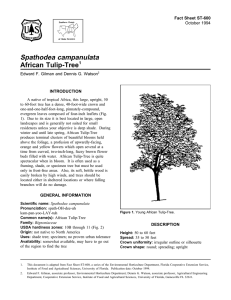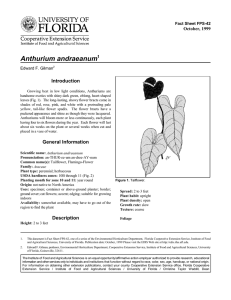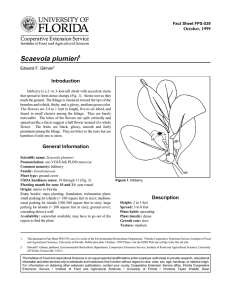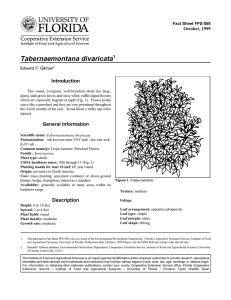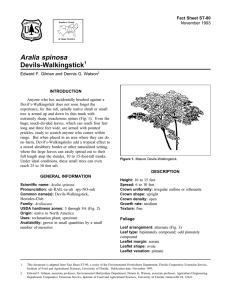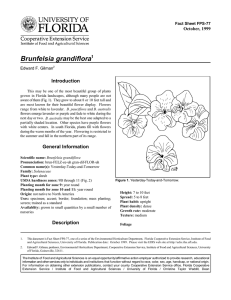Cassia alata Candlebrush Fact Sheet ST-125 1
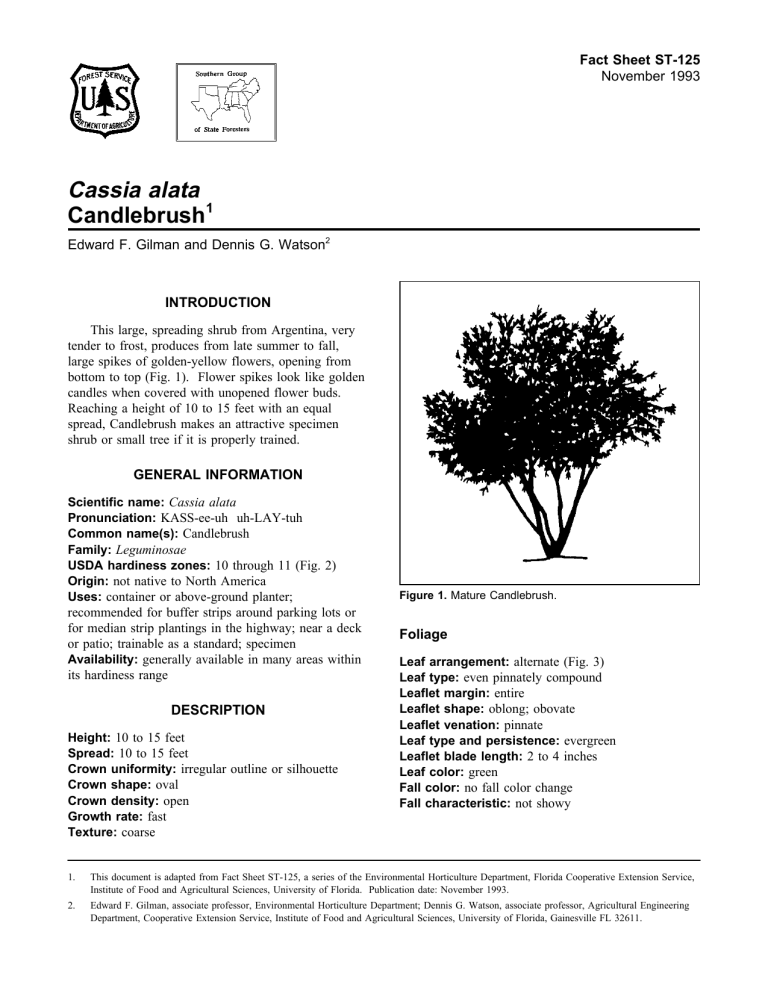
Fact Sheet ST-125
November 1993
Cassia alata
Candlebrush
1
Edward F. Gilman and Dennis G. Watson
2
INTRODUCTION
This large, spreading shrub from Argentina, very tender to frost, produces from late summer to fall, large spikes of golden-yellow flowers, opening from bottom to top (Fig. 1). Flower spikes look like golden candles when covered with unopened flower buds.
Reaching a height of 10 to 15 feet with an equal spread, Candlebrush makes an attractive specimen shrub or small tree if it is properly trained.
GENERAL INFORMATION
Scientific name: Cassia alata
Pronunciation: KASS-ee-uh uh-LAY-tuh
Common name(s): Candlebrush
Family: Leguminosae
USDA hardiness zones: 10 through 11 (Fig. 2)
Origin: not native to North America
Uses: container or above-ground planter; recommended for buffer strips around parking lots or for median strip plantings in the highway; near a deck or patio; trainable as a standard; specimen
Availability: generally available in many areas within its hardiness range
DESCRIPTION
Height: 10 to 15 feet
Spread: 10 to 15 feet
Crown uniformity: irregular outline or silhouette
Crown shape: oval
Crown density: open
Growth rate: fast
Texture: coarse
Figure 1. Mature Candlebrush.
Foliage
Leaf arrangement: alternate (Fig. 3)
Leaf type: even pinnately compound
Leaflet margin: entire
Leaflet shape: oblong; obovate
Leaflet venation: pinnate
Leaf type and persistence: evergreen
Leaflet blade length: 2 to 4 inches
Leaf color: green
Fall color: no fall color change
Fall characteristic: not showy
1.
This document is adapted from Fact Sheet ST-125, a series of the Environmental Horticulture Department, Florida Cooperative Extension Service,
Institute of Food and Agricultural Sciences, University of Florida. Publication date: November 1993.
2.
Edward F. Gilman, associate professor, Environmental Horticulture Department; Dennis G. Watson, associate professor, Agricultural Engineering
Department, Cooperative Extension Service, Institute of Food and Agricultural Sciences, University of Florida, Gainesville FL 32611.
Cassia alata -- Candlebrush Page 2
Figure 2. Shaded area represents potential planting range.
Flower
Flower color: yellow
Flower characteristics: fall flowering; summer flowering; very showy
Fruit
Fruit shape: pod
Fruit length: 6 to 12 inches
Fruit covering: dry or hard
Fruit color: brown
Fruit characteristics: does not attract wildlife; inconspicuous and not showy; no significant litter problem
Trunk and Branches
Trunk/bark/branches: bark is thin and easily damaged from mechanical impact; routinely grown with, or trainable to be grown with, multiple trunks; grow mostly upright and will not droop; not particularly showy; no thorns
Pruning requirement: requires pruning to develop strong structure
Breakage: susceptible to breakage either at the crotch due to poor collar formation, or the wood itself is weak and tends to break
Current year twig color: green
Current year twig thickness: medium; thick
Culture
Light requirement: tree grows in full sun
Soil tolerances: clay; loam; sand; slightly alkaline; acidic; well-drained
Drought tolerance: moderate
Other
Roots: surface roots are usually not a problem
Winter interest: no special winter interest
Outstanding tree: not particularly outstanding
Invasive potential: little, if any, potential at this time
Pest resistance: long-term health usually not affected by pests
Cassia alata -- Candlebrush Page 3
Pests
Caterpillars can cause a problem for Candlebrush, eating the foliage and flower buds.
Diseases
No diseases are of major concern.
Figure 3. Foliage of Candlebrush.
USE AND MANAGEMENT
Candlebrush grows rapidly in full sun on a wide range of soils. Pinching new growth increases branching, creating a fuller canopy which produces more flowers. Candlebrush produces the nicest flower display next year when it is pruned back hard in the spring. It makes a beautiful accent in a shrub border or planted as a specimen in a ground cover. Locate it near the patio or by an entryway for a stunning fall accent plant.
Propagation is by cuttings or seed, blooming the first year from seed.
